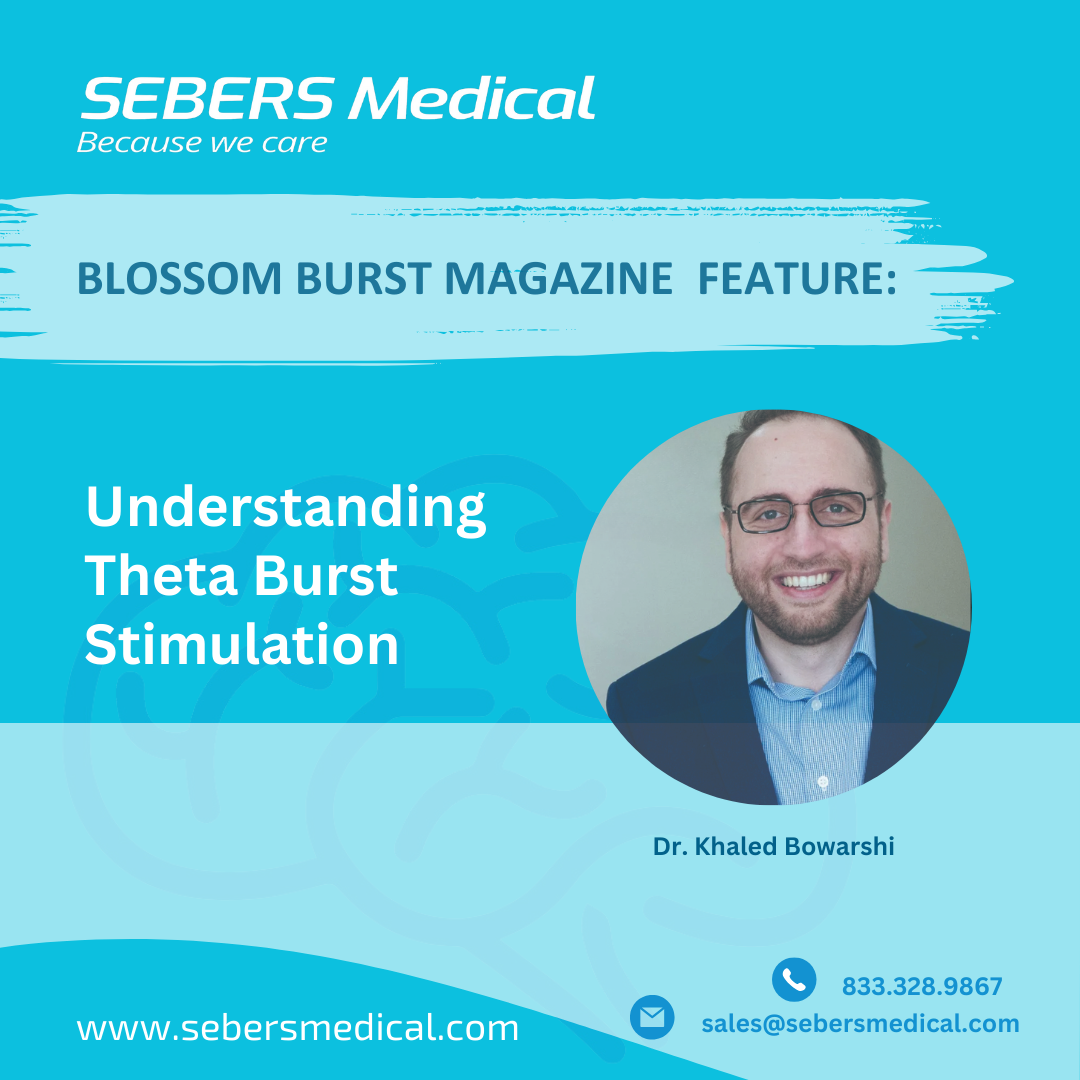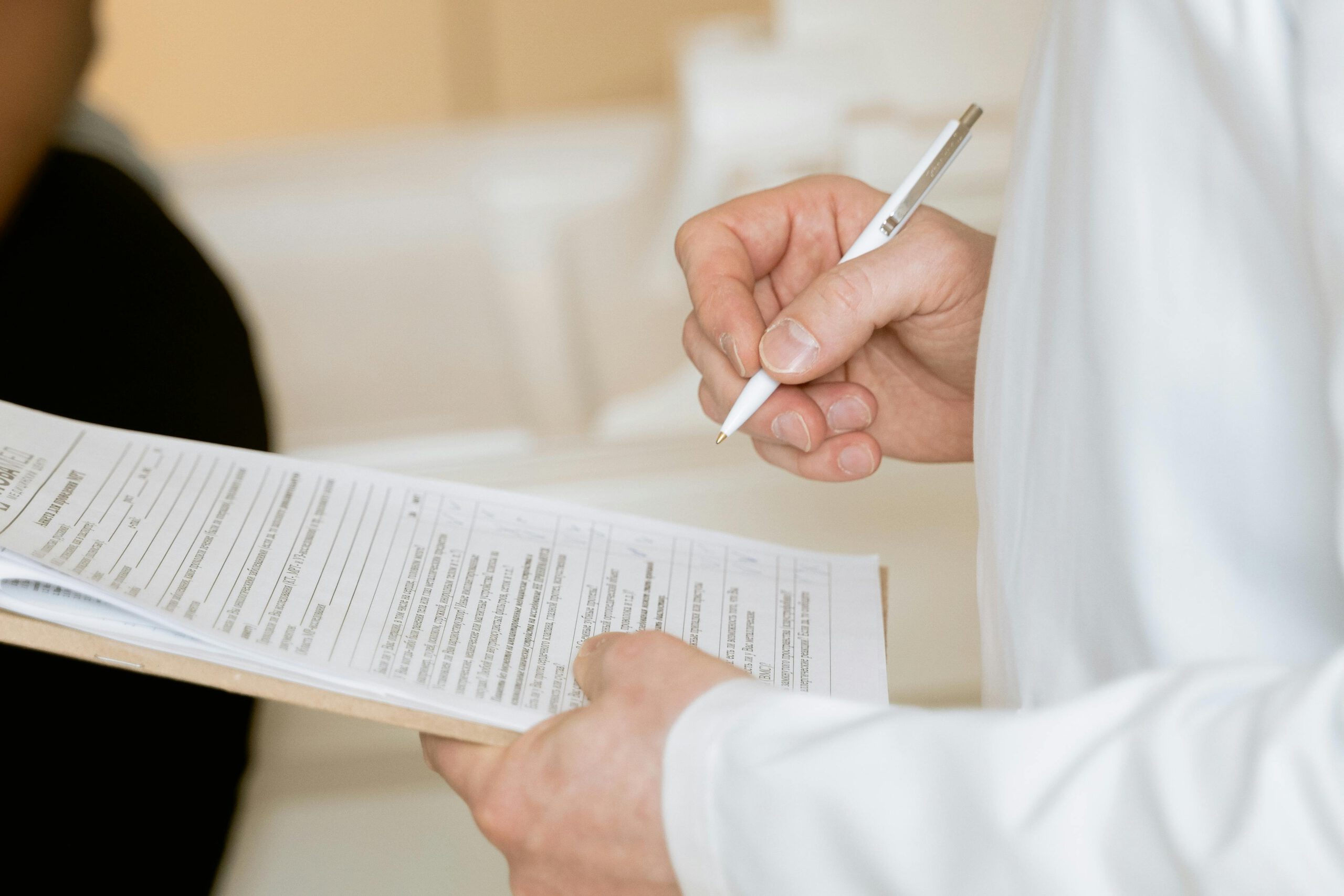Excerpt from our magazine: This blog post is an excerpt from our magazine. For a free digital or print version to read the full article and much more, visit us at https://sebersmedical.com/
In the evolving landscape of psychiatric treatment, particularly in the realm of depression therapy, few names stand out as prominently as Dr. Khaled Bowarshi. As the vanguard at Florida TMS Clinic, Dr. Bowarshi has pioneered the integration of Transcranial Magnetic Stimulation (TMS) into a comprehensive program of depression care. His expertise, underpinned by over a decade of clinical psychiatry experience and specialized training from prestigious institutions such as Duke and Emory Universities, has positioned Florida TMS Clinic as the premier destination for those seeking advanced treatment modalities beyond traditional medication.
Theta Burst Stimulation Made Simple
Dr. Bowarshi’s article on understanding theta burst stimulation (TBS) in TMS sheds light on one of the most innovative and encouraging advancements in mental health treatment, underscoring his commitment to both clinical excellence and patient education.
Modern pulse patterns in TMS enable accelerated treatment options, allowing for more effective and efficient care. Let’s break down the basics of TMS and the revolutionary theta burst stimulation.
Classification of TMS Based on Pattern
TMS can be classified into single-pulse TMS (used in mapping during a TMS therapy session or for migraine treatment) and repetitive TMS (rTMS). Repetitive TMS can be either intermittent or continuous. Intermittent rTMS involves pulsations that occur for a set period followed by a break, known as a “train” and “inter-train interval” (ITI) respectively. Continuous rTMS delivers pulsations without interruption and is used for treatments such as anxiety.
Classification of rTMS Based on Frequency
Repetitive TMS can also be categorized based on frequency: high-frequency (5 Hz or above) and low-frequency (below 5 Hz). For instance, the common high-frequency rTMS protocol for depression involves delivering magnetic pulses at a frequency of 10 Hz to the dorsolateral prefrontal cortex (DLPFC). Each train of 40 pulses is delivered in 4 seconds, with breaks between trains. This protocol delivers 3000 pulses per session.
Low-frequency rTMS, used for depression and/or anxiety, involves continuous pulsations at 1 Hz for 15-30 minutes, delivering 900 to 1800 pulses per session.
From Alpha to Theta: The Evolution of TMS Frequencies
Traditional rTMS has focused on the alpha wave frequency, with 10 Hz being a common choice. However, theta waves, which range from 4 to 7 Hz, are now gaining attention. Theta waves are crucial for memory formation and deep meditation, indicating their potential effectiveness in brain stimulation.
Introducing Theta Burst Stimulation (TBS)
Theta burst stimulation combines frequency and pattern modifications. It involves delivering a triplet of pulses at 50 Hz, repeated at 5 Hz, which falls within the theta wave frequency. This intermittent pattern (iTBS) enhances stimulation efficiency. A typical iTBS session involves 600 pulses, delivered in 20 trains with 8-second breaks between each train.
Effectiveness of Theta Burst Stimulation
Research has shown that iTBS is as effective as 10 Hz rTMS, as demonstrated in the THREE-D trial, which led to FDA approval for theta-burst stimulation in 2018. The trial proved that iTBS, delivering 600 pulses in just over 3 minutes, is a viable and more efficient alternative to the traditional 10 Hz rTMS protocol, which requires 3000 pulses and takes significantly longer.
Intermittent theta burst stimulation (iTBS) offers a unique and efficient pattern of repetitive TMS, delivering triplets of pulses at 50 Hz in bursts at a frequency of 5 Hz. This method is not only time-efficient but also highly effective, potentially offering superior results in higher dosages.
About Dr. Khaled Bowarshi
Dr. Khaled Bowarshi, leading Florida TMS Clinic, is a distinguished figure in psychiatric treatment, particularly in TMS therapy for depression. With a medical degree from Damascus University and extensive training in psychiatry, TMS, ECT, and Ketamine treatments from Duke and Emory, Dr. Bowarshi has significantly advanced mental health care. He is an elected director at the Clinical TMS Society and a clinical assistant professor. Florida TMS Clinic, based in Tampa and Wesley Chapel, Florida, is renowned for its FDA-cleared, medication-free treatment methods, supported by major insurance providers.
For more information about Dr. Bowarshi and the groundbreaking work at Florida TMS Clinic, visit Florida TMS Clinic.





